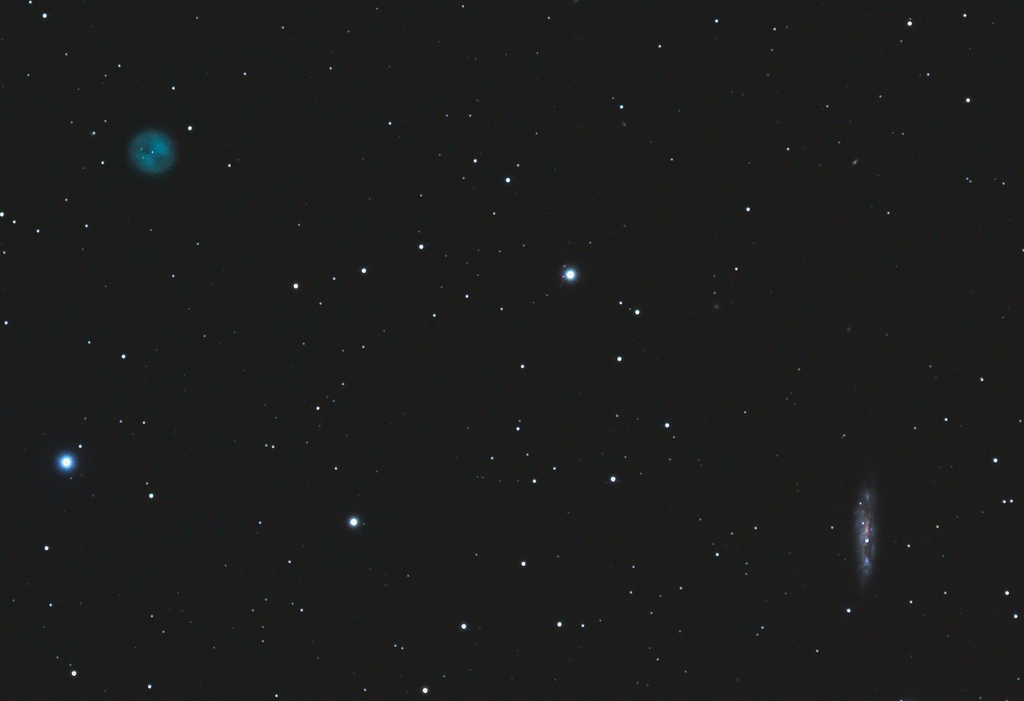Above is my take at the galaxy M108 and the planetary nebula M97. Unfortunately you cannot see any of the red outer layers of the nebula, because of the poor sensibility to the shorter wavelengths of my camera.
M97, also known as the Owl Nebula, is one of the faintest objects in the Messier catalog, and one of the four planetary nebulae there. A planetary nebula is an emission nebula consisting of an expanding glowing shell of ionized gas ejected during the asymptotic giant branch phase of certain types of stars late in their life. M97 is thought to have formed 6000 years ago. (Wikipedia).
M108, instead, is an isolated member of the Ursa Major Cluster cluster of galaxies in the Virgo supercluster. It has a morphological classification of type SBbc in the de Vaucouleurs system, which means it is a barred spiral galaxy with somewhat loosely wound arms. This galaxy has an estimated mass of 125 billion times the mass of the Sun and includes about 290 ± 80 globular clusters (Wikipedia).

